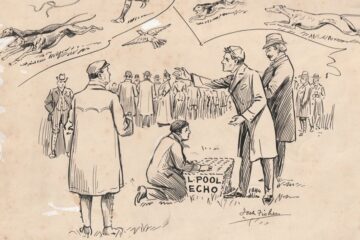Richie Gillham
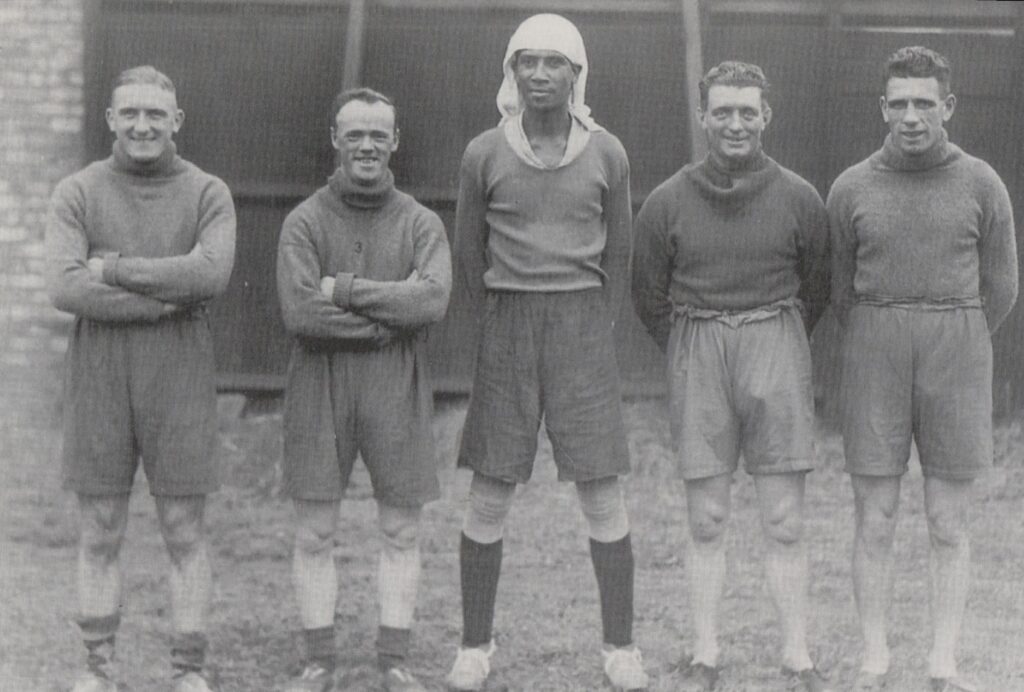
(courtesy of the John Rowlands Albert Geldard Collection)
Alejandro Villanueva: The Peruvian Legend who Dazzled at Home and Abroad
Alejandro Villanueva was one of the most iconic figures in Peruvian football during the heyday of the 1930s. Born on 4 June 1908, in Lima, Villanueva became a symbol of Peruvian football’s golden era during the 1920s and 1930s. Alejandro had many nicknames, including ‘Manguera’ – a nod to his ability and agility on the pitch with his extraordinary control of a football, and his many outrageous moves.

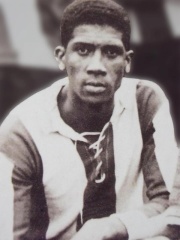
1908 – 1944
The striker also earned the nickname because of his prolific goal-scoring ability and the similar impact he had on Peruvian football to that which Dixie Dean had on English football. Like Dean, Villanueva was a dominant forward, known for his agility, creative play and unique style, including his famous bicycle kicks.
His flair and ability to captivate fans drew comparisons to Dean, the Everton legend who still holds the record for the most league goals in the English premier division with 60 goals in 1928, making the nickname ‘The Peruvian Dixie Dean’ both a tribute to his skill and a recognition of his influence in Peru. On 26 September 1933, the combined nations squad (the Combinado del Pacifico) landed in Liverpool. The Lord Mayor, councillor Alfred Gates, along with the directors of the Pacific Steam navigation company based in Liverpool, welcomed the squad and presented them with the national flags of Peru and Chile, which were to be flown at the stadiums of their games in the UK and Ireland, and on their European tour.
Early Beginnings in Peru and Rise to Fame with Alianza Lima
Villanueva’s journey in football began humbly in the streets of Lima, where he quickly displayed an unusual talent for the sport. At a towering 6’6”, he possessed an unusual combination of size and agility, which, when combined with his technical prowess, made him a formidable forward. His career began as a young teenager with Teniente Ruiz but quickly took off when he joined Alianza Lima in 1927, a club that would become synonymous with his name.
At Alianza Lima, Villanueva emerged as a key player, helping the team dominate Peruvian football during his tenure. He led Alianza Lima to six Peruvian League titles, solidifying the team’s reputation and establishing a loyal fan base that admired his flair and creativity on the field. It was during this period that Villanueva became known for his bicycle kick, a skill that wowed crowds and was so unfamiliar at the time that locals believed he had invented it. His performances were instrumental in shaping the early identity of Peruvian football, turning Alianza Lima into a powerhouse and securing his place as a revered figure in Peruvian sport.
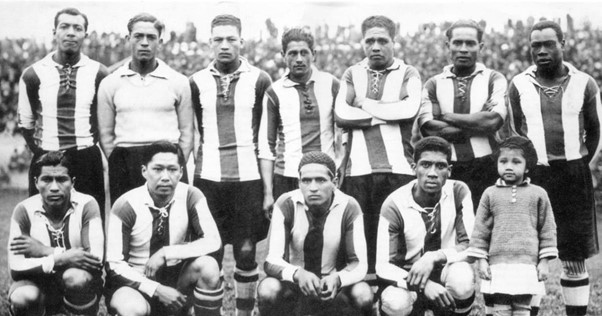
Alejandro ‘Manguera’ Villanueva led the so-called ‘Black Roller’ in Alianza Lima.
(Photo El Comercio Archive)
The ‘Intimates’ – Alianza Lima team, became famous for winning four Peruvian championship titles in a row (in 1931, 1932, 1933, and 1934), for the first (and so far only) time in Peruvian football. However, to this day, the awarding of the 1934 title remains a huge discussion point, with FIFA still involved ninety years on, as the Intimates were said to have won that title by 0.25 points (yes, 0.25!) from Universitario de Deportes, thanks to a bonus granted to Alianza for them winning a reserves tournament that was played in parallel to the first-team competition.
After suffering relegation from the top flight in 1938, the Lima side won the first tier of the Lima and Callao league a year later, although a step down from the national championship, . Villanueva went on to manage his beloved Alianz team for a short spell in the 1940-41 season.
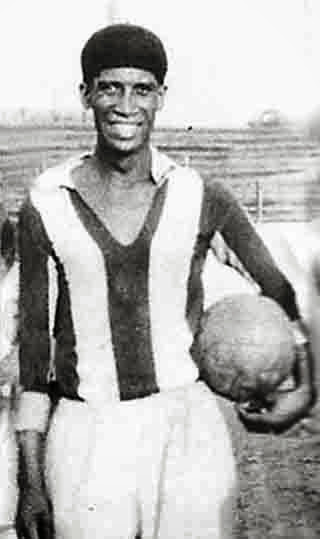
Several Peruvian football legends spoke about Alejandro Villanueva:
Villanueva is one of the greatest architects in football. He had genius and talent. I admired the greatness of his game and suffered mentally from taking the place of my childhood idol. He controlled the ball with determination and demonstrated the magic of football.
Luis Guzman (former Alianza Lima player)
I have played by his side for several years, but his divine abilities, wit and cheerfulness, especially abroad and where I can admire his abilities. I don’t know how to describe his greatness. However, I am truly grateful to him for giving me a taste of my greatest success, and I believe that I miss him because he was the greatest footballer ever. He has a genius talent that no one can compare to.
Theodoro Fernandez
Alejandro Villanueva… a true master, a great player and friend. I learned a lot playing alongside him and was incredibly smart. I think Mangera was the best of his era, and he had precise passing and dominance. Alianza Lima was special.
Juan Quispe (former Alianza Lima player)
The Visit to Liverpool
In 1933, Villanueva’s career took an international turn as he joined the Combinado del Pacifico, a binational team formed from Peruvian and Chilean players. Organised by Irish Peruvian businessman Jack Gubbins, this tour was more than just a football showcase; it was an attempt to foster goodwill and cultural exchange between South America and Europe. Villanueva and his teammates embarked on a challenging 7,000-mile journey from Lima to Liverpool, where they would play some of Europe’s top clubs
The Liverpool Echo reported extensively on this historic tour. On 11 May 1933, the paper announced Everton’s acceptance of the Peruvian Chilean team’s challenge, noting that the team would be playing not only Everton but also the league champions, Arsenal, and the Scottish Cup holders, Celtic. There would also be a trip to Ireland’s Dalymount Park to play Bohemians, managed by former Everton and Liverpool player Bill Lacey. Tom McIntosh, Everton’s manager, met with Jack Gubbins to coordinate the team’s European schedule and prepare for their arrival.

When the Combinado del Pacifico arrived in Liverpool in September 1933, the Liverpool Echo reported their reception with great enthusiasm. The team disembarked from the steamer Alkmaar and, after a long journey across the Atlantic, visited Everton’s Goodison Park to warm up. Liverpool’s mayor extended a civic welcome at the Town Hall, and Tom McIntosh commented on the team’s impressive skills despite the constraints of their long voyage. The Peruvian players, including Villanueva, gained admiration from locals and officials alike as they demonstrated their agility and skill, leading to a proposal of a game being arranged in the near future.
The highlight of Villanueva’s time in Liverpool was his meeting with Dixie Dean. As reported by ‘Bee’ of the Liverpool Echo on 28 September 1933, Villanueva met Dean at Walton hospital, where Dean was recovering from an ankle operation. Known as ‘The Peruvian Dixie Dean,’ Villanueva’s meeting with the English legend was a symbolic moment, with the two football icons exchanging insights about the game they both loved, reflecting the camaraderie between the two goal-scoring giants.
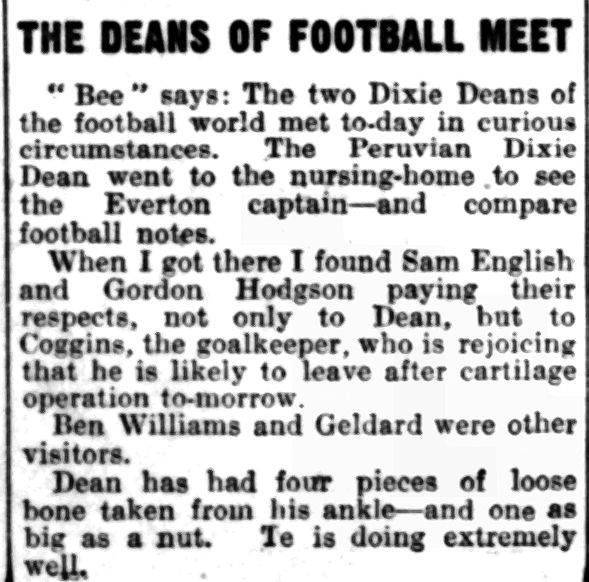
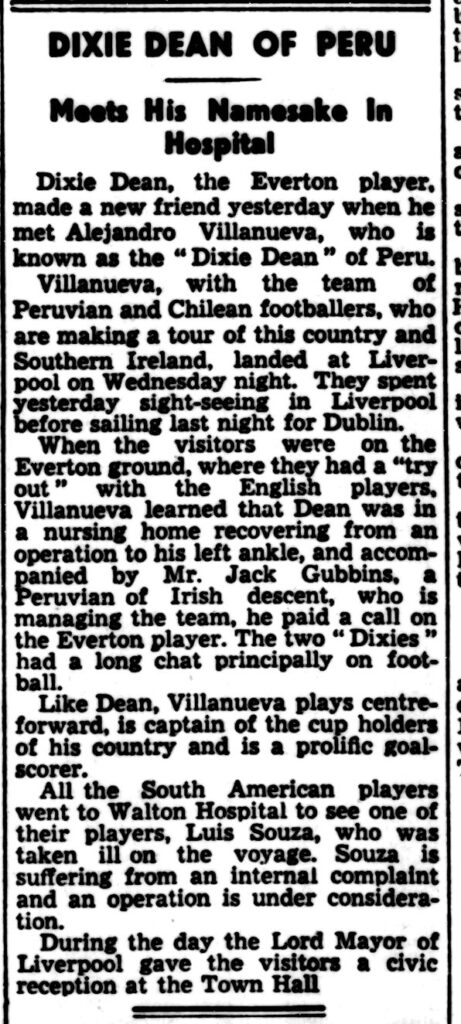
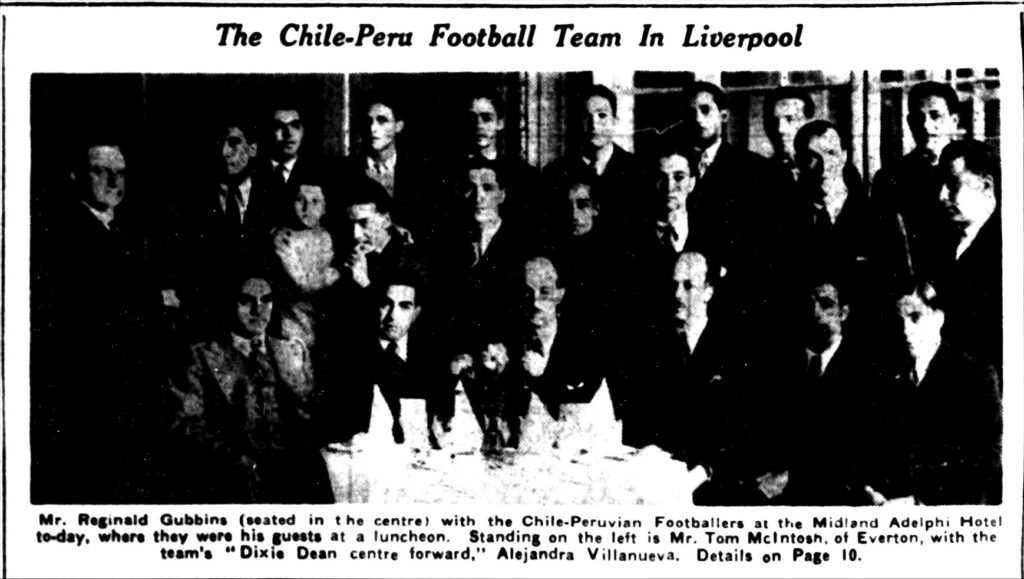
Highlights of the European Tour
The first match was in Ireland on 1 October 1933, against Bill Lacey’s Bohemian FC (Dublin). The game ended in a 1-1 draw. A packed audience watched as Villanueva and his team began their tour with a strong performance. Next up was Glasgow against the might of the famous Glasgow Celtic on 4 October, with the home side winning 2-1. Villanueva scored for the Combinado in the second half, showcasing his skills and impressing the crowd with his agility and precise ball control. Villanueva’s goal helped affirm his reputation as a technically gifted forward.
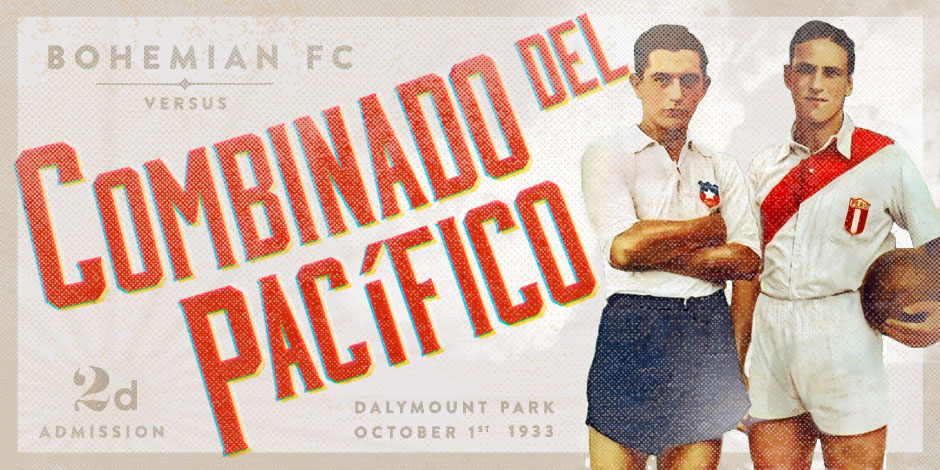
Poster of 1933 (Alianza Lima A Bohemian Sporting Life)
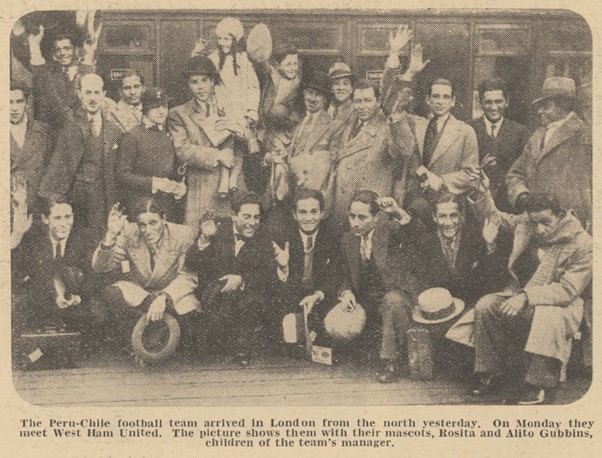
(theyflysohigh – Steve Marsh)
In the entertaining 2-2 draw with West Ham United at the Boleyn Ground on 16 October, Villanueva delivered a stellar performance. With a masterful setup, he assisted Pablo Pacheco’s opening goal in the first half and contributed to the final equalizing goal by Roberto Luco. Next up was a Newcastle side who gave their opponents a lesson in goalscoring, winning 6-1. The Magpies were far more physical and the Combinado couldn’t cope. Next up was an historic 2-1 win over Sparta Prague in late October. Again, Villanueva was instrumental, scoring a goal to help secure one of the tour’s most memorable victories.
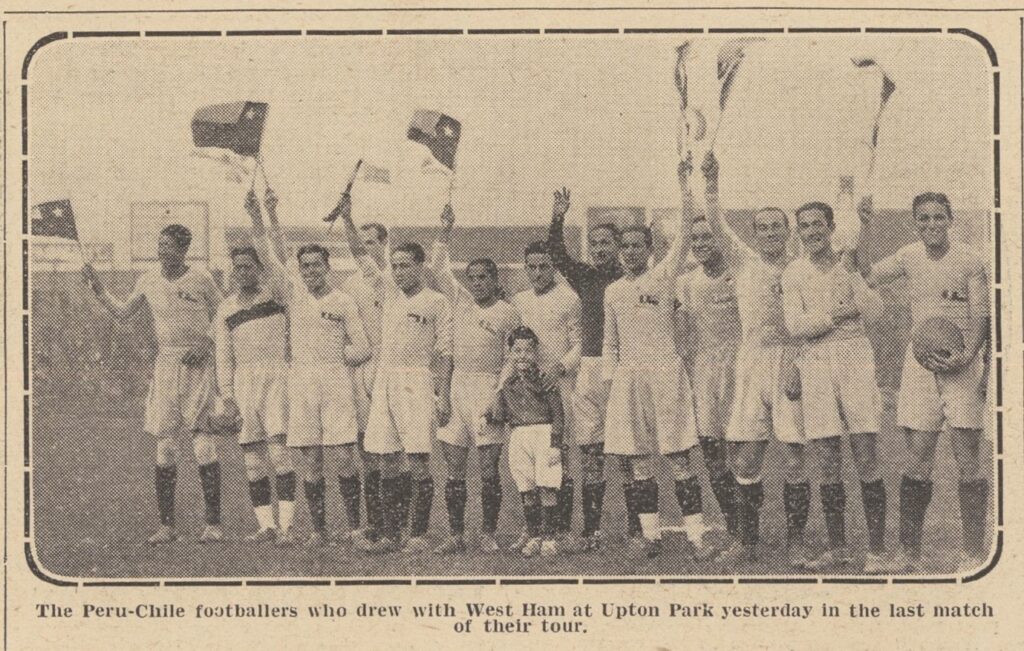
(theyflysohigh – Steve Marsh)
Draws in Paris, Nice and Sanremo (Italy) were the best of the results on the final leg of the journey.
The Peruvian Football Association decided to cancel the rest of the tour, ending any chance of the team playing Everton, an idea proposed by Tom Mcintosh when the team first arrived in Liverpool. The cancellation came to light because of the tour manager’s business ideas, when he split the squad between two games in Spain, losing heavily to both Barcelona (4-1) and a Madrid X1 (10-1).
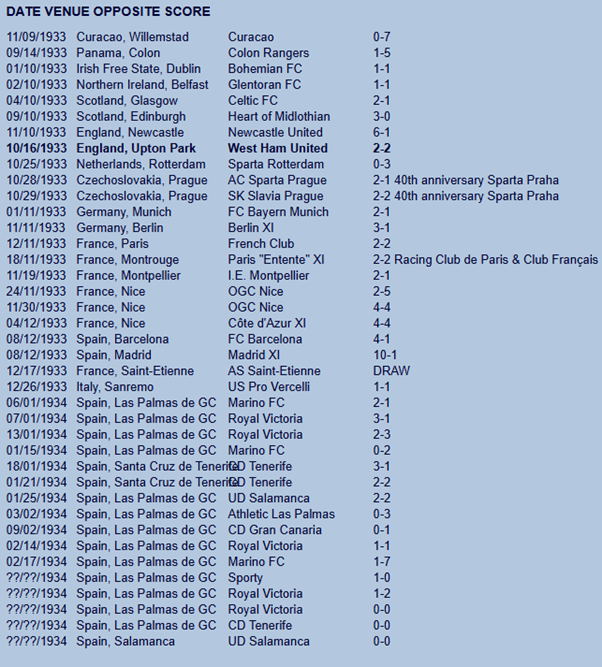
Villanueva enters the International Stage
Villanueva’s success with Alianza Lima led him to the international stage, where he became a cornerstone of the Peruvian national team. His first major appearance was at the 1927 Copa America, where he represented Peru against the strongest teams in South America. Villanueva’s international fame continued to grow, and he went on to participate in the 1930 FIFA World Cup, the 1936 Olympics and the 1937 Copa America. He was part of the national team’s Bolivian Games winning side in 1939, where he again represented Peru on a global platform.
One of Villanueva’s career highlights came at the inaugural Bolivarian Games in 1938, where Peru won the football tournament. Throughout these competitions, Villanueva’s performances showcased the flair and creativity that came to define Peruvian football. His ability to control the ball with precision and execute complex moves made him a crowd favourite and solidified his position as one of South America’s elite players of the 1930s.
The Travesty of The Berlin Olympics
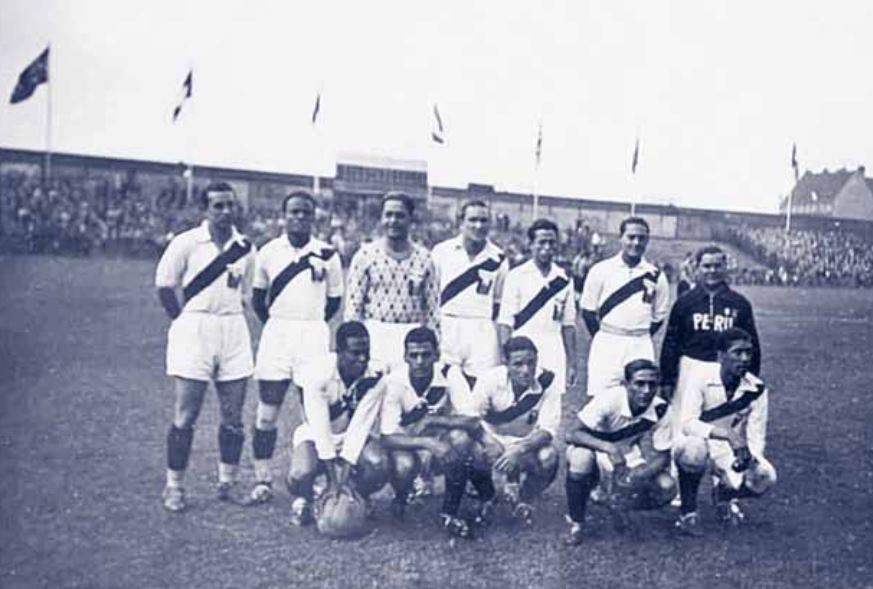
Berlin Gesundbrunnen, 8 August 1936.
(Photo; Volker Kluge Archive)
Alejandro Villanueva’s role in the 1936 Berlin Olympics was pivotal, as he was one of Peru’s most skilful forwards, helping to lead the Peruvian national team to the quarter finals. The Olympics saw Peru face Austria in a highly controversial match, which ended in a dramatic victory for Peru — but the outcome was later contested and overturned, leading to Peru withdrawing from the Olympics in protest.
During the match on August 8, 1936, Peru came back from a 2–0 deficit to tie the game, with a goal by Villanueva in the 81st minute forcing it into extra time. In the additional period, Peru scored twice more, with Alejandro getting the third and Fernández adding the fourth, resulting in a 4–2 victory. Villanueva and his teammates were celebrated for their remarkable resilience and teamwork, displaying technical skill and passion that thrilled both the crowd and Peruvian fans back home. The forward’s participation in the 1936 Olympics became a powerful symbol of national pride and resistance, remembered in Peru as a stand against perceived injustice.
Legacy and the Enduring Memory of Villanueva in Peru
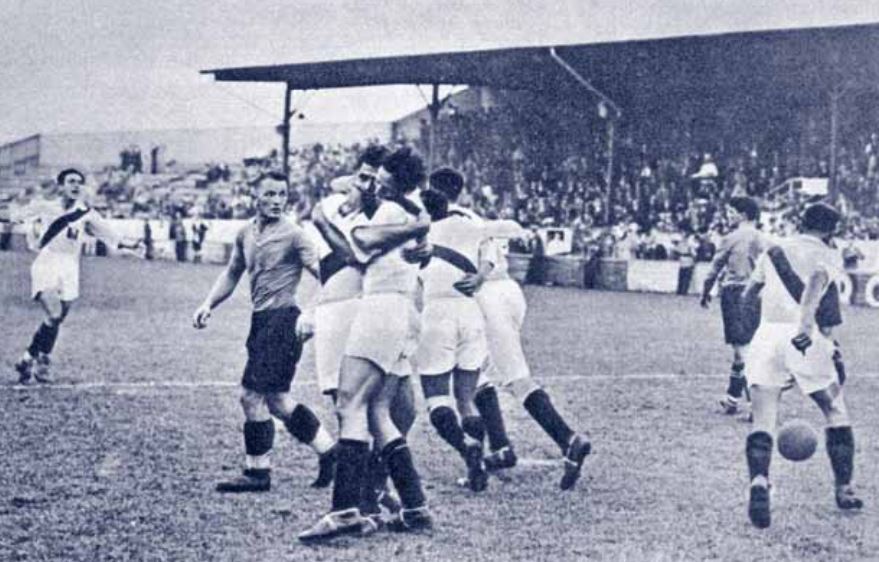
Tragically, Villanueva’s career was cut short when he passed away from tuberculosis at the age of 35 in 1944. However, his impact on Peruvian football did not fade. In 2000, Alianza Lima honoured Villanueva by renaming their stadium Estadio Alejandro Villanueva, which is in the La Victoria district of Lima. Also known locally as Matute, this stadium stands as a testament to Villanueva’s contributions to Peruvian football and his role in shaping the identity of Alianza Lima.

Acknowledgements
John Rowlands & Albert Geldard The Albert Geldard Collection
Sport-Total Trade Peru, Alejandro Villanueva, Alianza Lima’s eternal idol
Billy Smith, The Blue Correspondent (online)
Pantheon World Football Profiles, Alejandro Villanueva (online wiki)
Footboom, online news updates, FIFA Ends Controversy Over 1934 Title and Declares Alianza Champions (25 Sep 2024)
Volker Kluge, La Blanquirroja – Perú’s forgotten heroes of Olympic Football
gerrytastic, From the Andes to Dalymount Park – Bohemians v The Peru/Chile XI , A Bohemian Sporting Life (online blog) 13 August 2015
Steve Marsh, They Fly So High (online)
Paul Owens – Proof reading
Rob Sawyer – additional research
Mike Royden – Proof reading, editing and web layout

